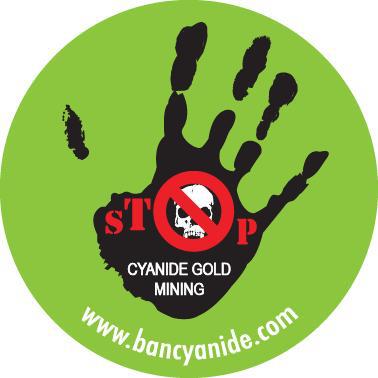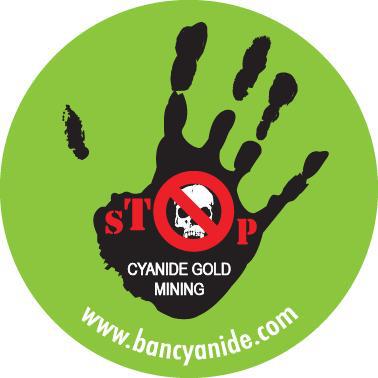The chronology of the Bukit Koman cyanide crisis, through the eyes of the affected residents.
13 Jan 1997: Without the residents’ knowledge, the Department of Environment (DOE) approved the preliminary Environmental Impact Assessment (PEIA) submitted by the Raub Australian Gold Mine (RAGM).
4th Dec 2006: Residents learned about the use of the hazardous cyanide in the nearby gold mine and formed the “Bukit Koman Ban Cyanide in Gold Mining”.
Throughout 2007: Written memorandums were submitted to various representatives and assembly persons to seek assistance and clarification but there were no satisfactory responses.
July 2007: The resident committee seek technical and legal aid from Sahabat Alam Malaysia (SAM).
October 2007: After various efforts, the residents finally received the PEIA documents and thus, appointed experts to review the documents.
Feb 2008: Cyanide mining expert from US, Dr. Glenn C. Miller visited Bukit Koman, Raub.
29 May 2008: Dr. Glenn C. Miller released an expert report, stating that RAGM failed to comply with the following:
- Provide sufficient and significant information about the detoxification (destruction) of cyanide, as well as the hazardous waste and gas emission; and
- Address the health concern of the residents as well as informing them about the hazards of the chemical used and the emergency plan. Compliance with international standards.
21st March 2008: The committee applied for judicial review on the report:
- To challenge the decision of the Department of Environment Director-General (D-G) in approving a preliminary environmental impact assessment (EIA) report involving a mining project which uses sodium cyanide to extract gold; and
- To request for a Detailed Environmental Impact Assessment (DEIA) from RAGM.
Feb 2009: RAGM started its Carbon In Leach (CIL) operation plant that used thousands of tons of toxic and hazardous chemicals including NaCN, HCl etc.
Within a month after the Raub Australian Gold Mine (RAGM) started its operation, more than 300 residents from nearby villages were medically reported to be suffering from illnesses including: skin rashes, red and watery eyes, throat irritation, shortness of breath, nausea and vomiting, dizziness and others signs and symptoms of health problems.
Early 2009: Residents bought few units of sulphur dioxide (SO2) and hydrogen cyanide (HCN) air quality monitoring devices. The results showed significant higher readings to what have been reported by the Department of Environment. The residents had been exposed to the hazardous air borne pollutants such as sulphur dioxide and hydrogen cyanide.
1st June 2009: the High Court rejected the judicial review on the following grounds:
Public can only challenge the PEIA within 40 days after the approval. The Department of Environment has no right to request a DEIA from the Raub Australian Gold Mine (RAGM).
The residents appealed the case within a week. Few months later, RAGM appealed to court requesting the prosecutor to pay the legal fee. The High Court judge had earlier ruled that the case involved public interest and thus waived the court fee.
23 June 2009: The residents submitted a memorandum to Ministry of Science, Technology & Innovation (received by the Deputy Minister of the Prime Minister Department) during the Parliamentary sitting.
July 2009: Thousands of residents staged a peaceful protest and demonstration in the village.
October 2009: The residents organized a dinner and briefing session. However, the residents were stopped by the police from wearing green T-shirts with the word “cyanide” printed on them.
13 Jan 2010: The residents met with the Department of Environmental (DOE) to submit their demands. The meeting did not arrive at any conclusive decision.
3rd August 2011: Court of Appeal upheld the High Court decision in holding that the residents ran out of time in seeking leave to judicial review (the decision). Though the court fee was waived, the reason given was not acceptable to the residents.
7th August 2011: The residents decided to appeal the case to Federal Court.
11 Jan 2012: A three-man Federal Court panel chaired by Chief Judge of Sabah and Sarawak Tan Sri Richard Malanjum allowed the residents’ application for leave to appeal against a High Court’s refusal to grant them permission to commence a judicial review. Hearing is expected on 10 July 2012. The date has now been postponed to September 6th, 2012.
19-20 May 2012: The Committee initiated a health survey of the residents living in Bukit Koman and the Raub area. Up to 78% respondents say that they are facing various health issues, including 50% of the residents suffering from skin diseases and eye irritation. Another 40% of the respondents had coughing problems. The results are exceptionally higher than most of the communities.
Acknowledgements & Prepared by: Hue Shue Li (Resident of Bukit Koman), Bukit Koman Ban Cyanide in Gold Mining Action Committee.
For more information, and to support the campaign, please visit their Facebook page: http://www.facebook.com/BanCyanideInGoldMining
Related articles:
Bukit Koman: 10 Reasons Why We Protest Against the Use of Cyanide In the Gold Mine Operation
Himpunan Hijau Raub 902: Take action now or never!



Gold mining is so dam dangerous, sometimes I wonder if it worth the risk?
There are other ways in which gold can be mined. Ethical mining practices must be adhered too. http://www.senmin.co.za
They really should. All the gold in the world isn't worth risking so many lives just to get it.